
|
|
Blade Core
This artifact was used to provide stone blades.
Blade cores provided a portable source of stone or obsidian
for manufacturing different kinds of tools by flaking off
pieces from the core. The basis of many Upper Paleolithic tool
forms from both the Old and New Worlds was the blade
flake, a thin, parallel-sided flake that is at least
twice as long as it is wide. Blade flakes were
"pre-forms" that could be fashioned into knives, hide
scrapers, spear tips, drills, and other tools.
|
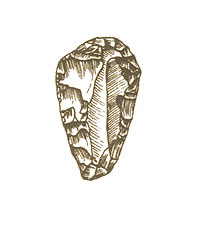
|
|
End Scraper
This artifact was used for scraping fur from animal hides.
For European and American Stone Age peoples, end scrapers
served as heavy- duty scraping tools that could have been used
on animal hides, wood, or bones. Once the hide was removed
from an animal, an end scraper could take the hair off the
skin's outer layer and remove the fatty tissue from its
underside. End scrapers were sometimes hafted, or attached to
a wooden handle, but could also be handheld.
|
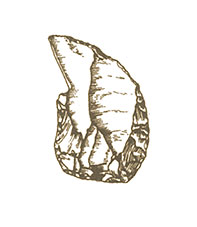
|
|
Burin
This artifact was used for carving bone, antler, or wood.
Burins are among the oldest stone tools, dating back more than
50,000 years, and are characteristic of Upper Paleolithic
cultures in both Europe and the Americas. Burins exhibit a
feature called a burin spall—a sharp, angled point
formed when a small flake is struck obliquely from the edge of
a larger stone flake. These tools could have been used with or
without a wooden handle.
|
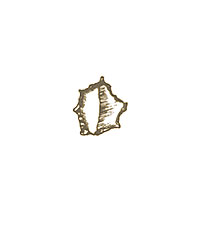
|
|
Awl
This artifact was used for shredding plant fibers.
Awls were small, pointed hand tools employed in both the Old
and New World to slice fibers for thread and fishing nets, and
to punch holes in leather and wood. Stone Age peoples may also
have sliced animal hides to make clothing using awls. These
tools could be made from stone or bone and were highly
sharpened for maximum efficiency.
|
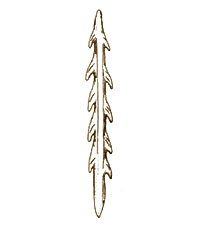
|
|
Antler Harpoon
This artifact was used for hunting large marine animals.
Upper Paleolithic cultures in Europe between 20,000 and 10,000
years ago hunted seals, whales, and even swimming land mammals
such as reindeer using antler harpoons. In the New World,
these harpoons appeared only around 6,000 years ago in the
arctic cultures of Alaska and Canada. Experts believe antler
harpoons were used in tandem with wooden launchers known as
atlatls to help the harpoon penetrate prey with more force.
|
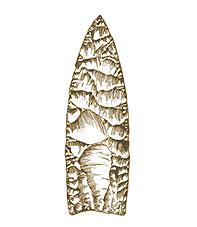
|
|
Clovis Point
This artifact was used for killing mammoths and other
megafauna.
Clovis refers to this particular style of stone spear point
and to the culture of the North American people who used such
weapons to devastating effect against large game. Clovis
points are leaf-shaped and have a wide groove, or flute, on
both sides of the base for fitting into short wooden or bone
spear shafts. The largest spear point ever found, measuring
nine inches long, was a Clovis point made of chalcedony, a
kind of quartz.
|
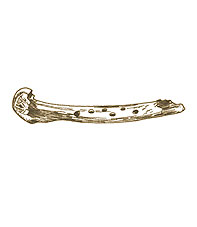
|
|
Bone Flute
This artifact was used for playing music.
Made of bone, this wind instrument dates to around 14,000
years ago in France. Hunters may have carried such flute-like
instruments in their mobile toolkits or been buried with them,
perhaps for the afterlife. Other artistic relics of Stone Age
peoples, especially in the Old World, include carved
figurines, cave paintings, and beaded clothing. France's
Solutrean culture of 23,000 to 18,000 years ago is noted for
its artistic tradition.
|
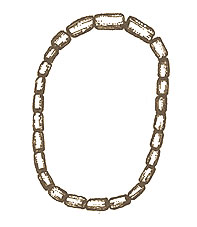
|
|
Beads
This artifact was used for personal ornamentation.
It's impossible to know definitively, but experts think beads
made of bone, ivory, shells, and teeth were decorative and
might also have been traded as currency, based on what they
know about the cultures of contemporary native peoples. They
have unearthed necklaces, pendants, bracelets, and anklets at
Stone Age weapons caches and burial sites in Europe and the
Americas.
|
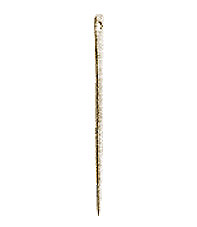
|
|
Needle
This artifact was used for stitching hides.
Stone Age technology included delicate sewing needles made of
bone with punched eyeholes. They were probably used in tandem
with thread fashioned from plant fibers or animal sinew.
Archeologists have found bone needles dating to within the
past 20,000 years in Europe and North America, where they
might have facilitated clothing and boat production.
|

|
|
Bone Point
This tool was used for launching at animals during hunting.
Bone projectile points were flexible, light, general-purpose
weapons for hunting large land animals. To be as lethal as
possible, their tips were chiseled to exquisite sharpness.
This is a North American point, but bone points hafted onto
wooden or bone handles were also common in the Stone Age Old
World. A deep groove cuts into the base of the point, where a
hunter would have inserted a wooden thrower and secured it
with resin.
|

|

|

